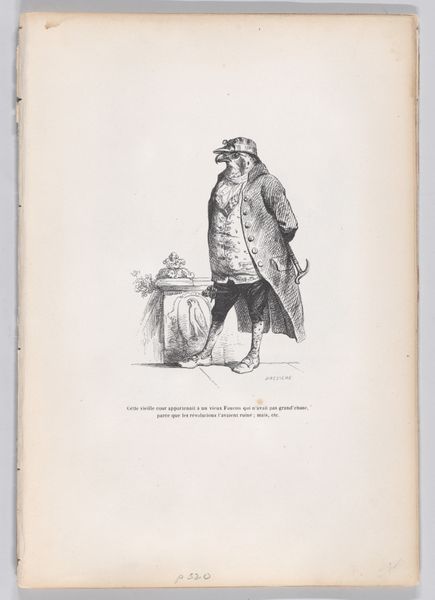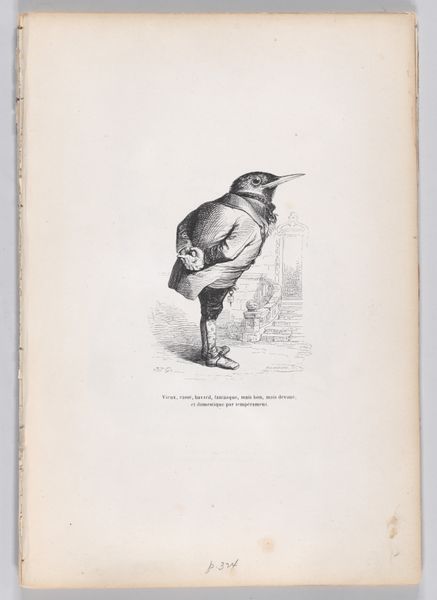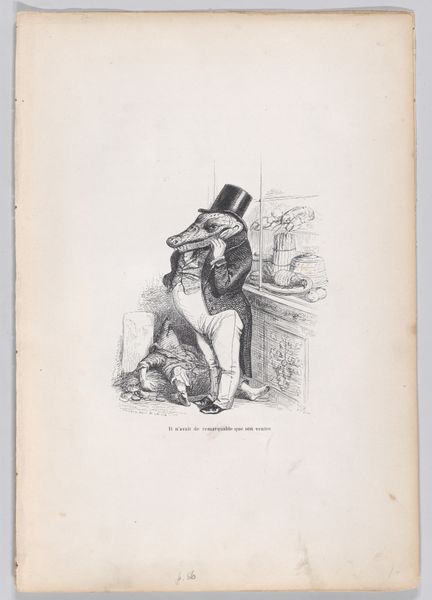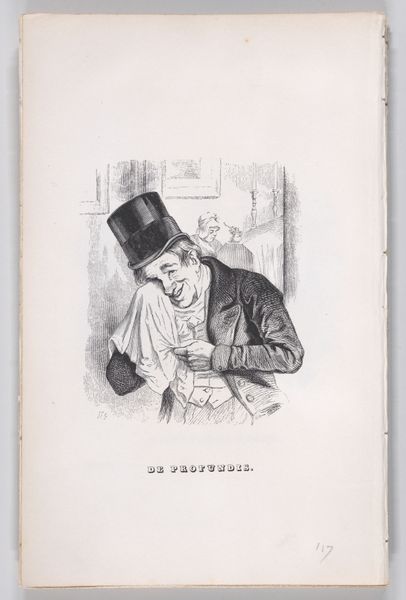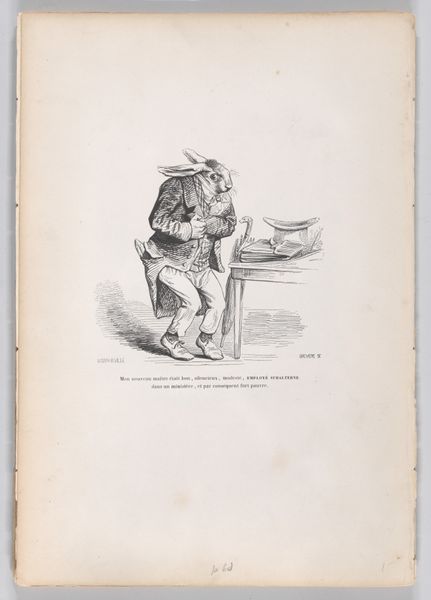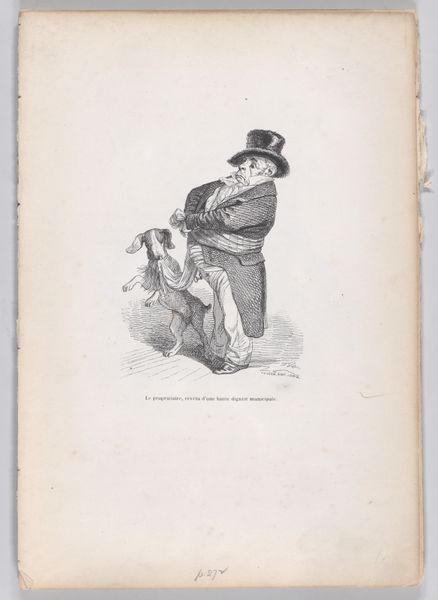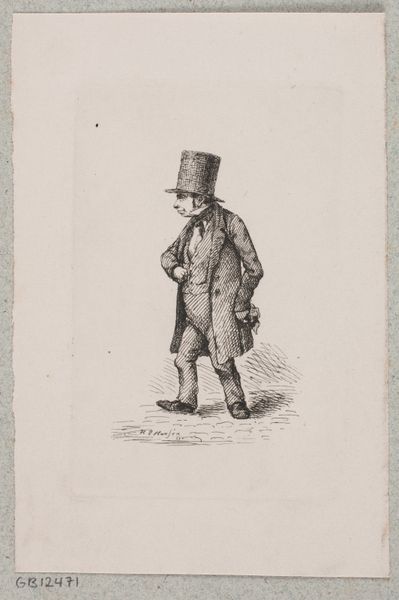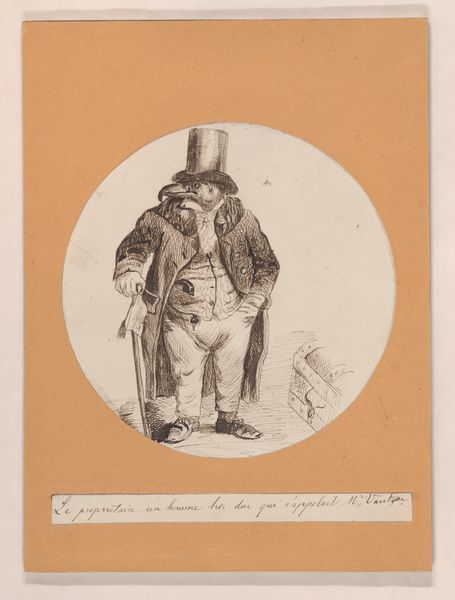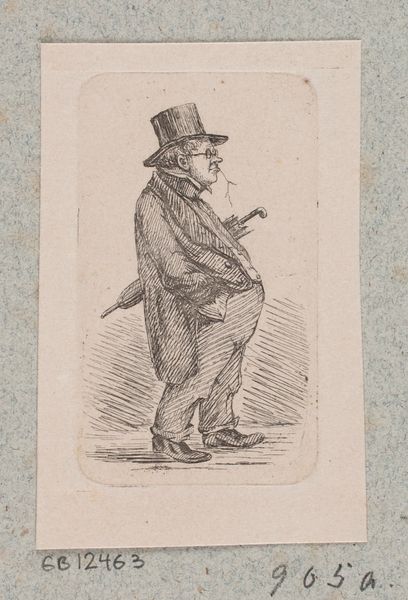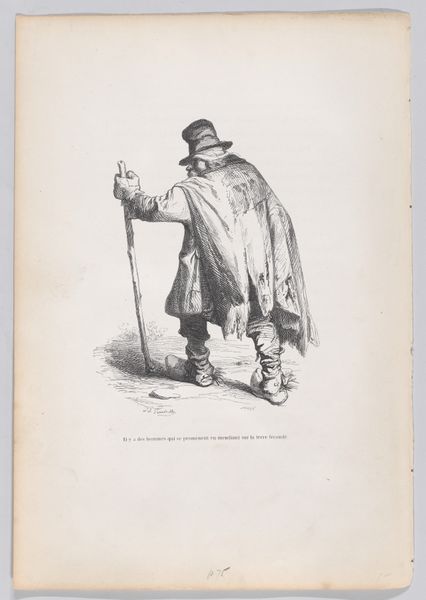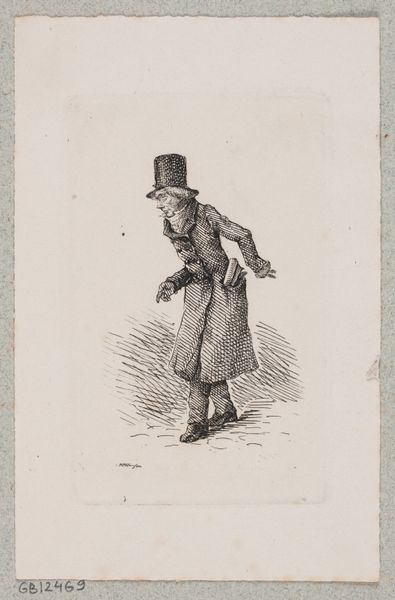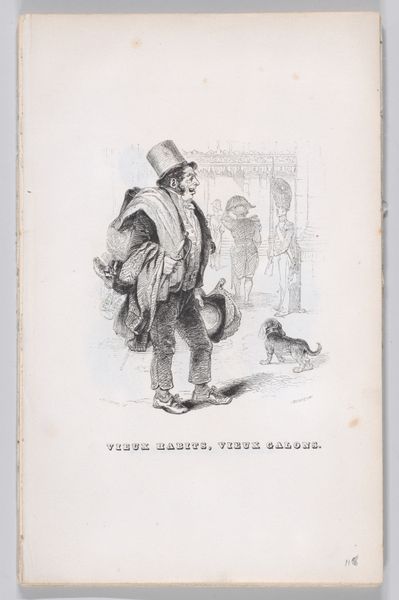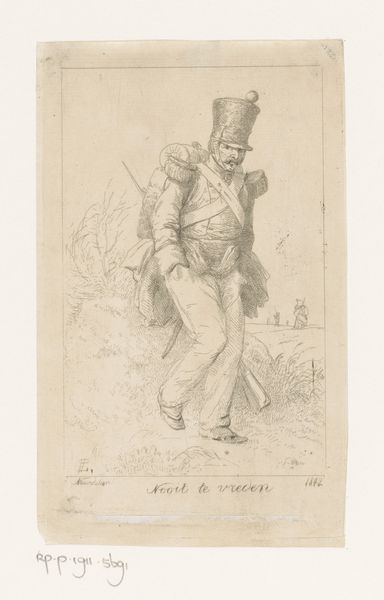
"To pay the landlord, a very harsh man, whose name was M. Vautour" from Scenes from the Private and Public Life of Animals 1832 - 1852
0:00
0:00
drawing, lithograph, print
#
drawing
#
lithograph
# print
#
caricature
#
romanticism
#
genre-painting
Dimensions: Sheet: 10 3/8 × 7 3/16 in. (26.3 × 18.2 cm)
Copyright: Public Domain
Curator: Let's consider this lithograph, "To pay the landlord, a very harsh man, whose name was M. Vautour," dating from 1832 to 1852, by J. J. Grandville, presently held in the collection of the Metropolitan Museum of Art. Quite a striking image. Editor: Indeed! My first impression is how much the detailed hatching contributes to the character’s tangible form. You can almost feel the texture of his feathered face and opulent clothing. The social commentary practically jumps off the page. Curator: The piece is exemplary of Grandville’s style—romanticism interwoven with caricature. Note how the anthropomorphic depiction places the landlord, with his distinct vulture-like features, in a critical light. Editor: Exactly. The choice of lithography as a medium is critical. It allowed for the wider distribution of such socio-political critiques, directly engaging with public consciousness and potentially inciting social reform during a tumultuous period in French history. Who were his likely consumers? Curator: Mass production allowed for prints to be distributed to a relatively broad audience. But keep in mind the societal framework. While access was democratized by printmaking, we cannot ignore the limitations imposed by class and literacy. How would such works be perceived across social strata? Editor: Precisely! This points towards the print’s inherent social agency. Beyond the literal portrayal, consider the power dynamics involved in disseminating critical commentary aimed at influential figures, playing out in cafes, salons, and even political circles. Curator: Beyond mere representation, consider how Grandville’s material choices would resonate with contemporary viewers, both supporting and undermining established hierarchies within artistic production itself. A fascinating point of interplay. Editor: It really highlights the potential of printed images to intervene in social debates. This artwork really goes beyond a simple illustration; it functions as a piece of political theatre! Curator: This close examination illuminates how much a seemingly straightforward caricature can embody significant societal critique and material understanding, challenging us to rethink the boundaries between artistic creation and social commentary. Editor: And for me, it really makes you consider the active role such artwork can take in shaping discourse.
Comments
No comments
Be the first to comment and join the conversation on the ultimate creative platform.
